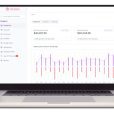As followers of yellowcake would know, there have been plenty of proclamations about an imminent recovery post Fukushima, but they have all turned out to be false dawns.
With buyers and sellers trilling from the same song book, is this time different?
Attending a global nuclear energy powwow in Adelaide late last year, Boss Resources (BOE) chief Duncan Craib gleaned that a fundamental supply and demand shift was about to unfold in the uranium sector.
Why? For the first time both the producers and the power utilities agreed that the market would be in a shortfall position within three years, a turnaround on the persistent glut that has held prices down since the 2011 Fukushima disaster in Japan.
“It’s the first time utilities and suppliers are aligned in their view that there will be a supply shortfall,” Craib says. “Already demand is outstripping production.”
Since mid March the price of triuranium octoxide (U3O8) has firmed around 30 per cent, to a four-year high of around $US33 ($50) a pound. Put in context, the commodity plunged to a 12-year low of $US18/lb in late 2016, having peaked at close to $US140/lb in June 2007.
True, the dramatic collapse of the oil price implies a broader energy glut. But the reality of atomic power plants is they are long-lead ventures that require inelastic long-term supply.
At face value, the rally has been driven by the COVID 19-driven curtailment of output at key mines in Kazakhstan, Canada and Namibia.
The world’s biggest producer, Kazakhstan’s Kazatomprom has shut down production for three months, while Canada’s Cameco earlier stubbed out production at Cigar Lake for at least four weeks and then extended this hiatus. Namibia has shuttered its giant Rossing mine.
In truth the curtailments continue a recent price-driven trend of tapering production, which has removed roughly one-third of output. But the market is always tight, with output mainly matching contracted demand.
“Unfortunately it has taken an event such as COVID-19 to highlight the extent that global nuclear power operators depend on a limited number of jurisdictions and an equally small number of primary uranium producers,” laments Peninsula Energy (PEN) chief Wayne Heili.
“This dependency is a direct result of a prolonged suppression of uranium prices, largely created by the different financial environment enjoyed by state-sponsored mining operators.”
Broker Cannacord Genuity forecasts a 5.32 million pound global surplus in 2019 will become an 8.7m lb deficit this year, abating to a 139,000 lb shortfall in 2021.
However Bannerman Resources (BMN) cites a “structural” deficit of 20m lb a year, 11 per cent of consumption, growing to 40m lb as the COVID-19 closures hit.
“If this continues it’s plausible the shutdown may last well beyond these times and that’s when life gets quite interesting,” says Craib.
Craib reckons the utilities will need to enter the spot market to build up their surplus. Many are availing of ‘upwards flex’ clauses which means they can demand up to 10 per cent of additional supply, which means the producers have had to avail of the spot market to satisfy the contracts.
Cannacord analyst Larry Hall says: “While spot prices remain well below acceptable returns for the industry, the prevailing uncertainty over near term supply is likely to induce utilities to offer improved long term pricing to ensure future feed requirements are covered.”
The current uranium boom-ette spells honeymoon conditions for Boss, which is seeking to restart its Honeymoon mine in uranium-friendly South Australia.
Low prices forced then owners Uranium One to mothball the mine in 2014, but not before the Russian-controlled Canadian group spent $170m on infrastructure. Boss acquired the mine in 2015.
Released in January, Boss’s Honeymoon feasibility study outlines a capital cost of $US63m for an operation initially producing 2.2 million pounds per annum, although the mine has an export licence for 3.3m lb a year.
However the study’s economics are based on a $US50/lb uranium price – still a far cry from the current values. “We still have some way to go,” Craib admits.
Boss is in offtake discussions with mainly US utilities, with a view to supporting a finance package of debt and equity.
Vimy Resources (VMY) chief Mike Young notes that security of supply trumps price every time in the uranium game.
The backdrop is a development drought of new projects, the result of the price slump. According to the World Nuclear Association’s 2019 fuel report, only four projects were in development globally, with six planned.
The latter includes Vimy’s Mulga Rock project in Western Australia, touted as the country’s largest advanced uranium project with current reserves of 42 million pounds and a resource of 90m lb.
A definitive feasibility study in 2018 cited a net present value of $530m, but assuming a uranium price of $US60/lb.
Meanwhile, Peninsula Energy this month won the approval of Wyoming authorities to restart its flagship Lance project using an efficient low Ph in-situ recovery (ISR) method.
“Lance holds the largest defined uranium resource of any recently-producing US ISR project and is the only one authorised to use the industry-leading low pH extraction method,” Heili says.
Last week the US’s Nuclear Fuel Working Group recommended that the government spend $US1.5 billion over the next ten years to buy uranium from local producers to create a national stockpile. The country is highly dependent on foreign supply.
The stockpile would be available for nuclear power operators in the event of a nuclear fuel market disruption – and is also earmarked for nuclear weapons and the US Navy’s nuclear reactors.
Heili says the measures would entail the purchase of 17 to 19 million pounds of freshly mined uranium annually. “This looks to be a very good outcome for Peninsula and all US uranium producers.”
Further afield, industry veteran Paladin Resources (PDN) is eyeing a restart of its 75 per cent owned Langer Heinrich mine in Namibia. The mine has been mothballed since May 2018.
A restart depends on Paladin securing long-term contracts “with sufficient tenure and value to deliver an appropriate level of return to shareholders.”
Revving up the 5.2-6.5m lb a year mine would cost $US80-100m. But the company notes that starting a similar operation from scratch would cost at least $US600m and take at least five years.
Bannerman Resources is furthering a definitive feasibility study for its Etango mine in Namibia. With a 271 million pound resource, Etango is touted as the world’s largest advanced unaligned uranium project.
On the demand side, uranium’s future looks secure given the need for low carbon base load power to fuel all those Teslas (and we’ll close the good-versus-evil uranium environmental debate before it evens opens).
Vimy’s Young notes there are 442 reactors operating in 31 countries, with a further 493 planned, proposes or under construction. Of the 330 proposed facilities, 170 are in China.
Presuming all these plants are built, uranium demand would soar from 170m pounds per annum to 417m lb.
Vimy estimates the uranium miners have been operating at an ‘all in sustaining’ production cost of $US32/lb, compared with the average five year spot price of $US24.60/lb.
That, in essence, shows why the valuations of the up-and-coming uranium plays are starting to look interesting. While the aforementioned stocks have moved off their lows post the COVID-19 meltdown, with the exception of Boss they’re still trading at lower levels than a year ago.
Disclaimer: Under no circumstances have there been any inducements or like made by the company mentioned to either IIR or the author. The views here are independent and have no nexus to IIR’s core research offering. The views here are not recommendations and should not be considered as general advice in terms of stock recommendations in the ordinary sense.
- Amid dazzling returns, is now the time to join the diamond hunt? - November 10, 2021
- Two listed ag stocks that promise a bounteous harvest for investors - November 3, 2021
- ASX-listed e-gaming stocks show promise but are they in the main event? - October 27, 2021













Leave a Comment
You must be logged in to post a comment.